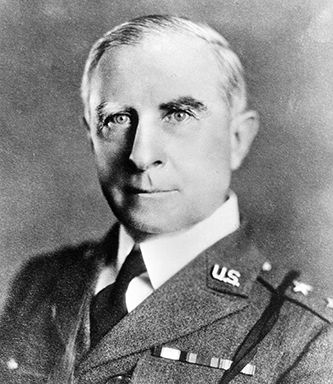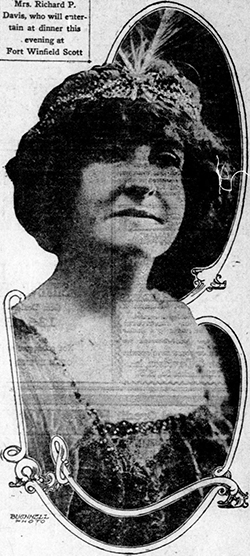23 June 1866–17 Sept. 1937
See also: Hayne Davis, brother.

Richmond Pearson Davis, career military officer and major general of artillery, was born in Statesville, the son of Hayne and Mary Williams Davis. He was graduated from the United States Military Academy in 1887, ranking sixth in his class. From 1891 to 1896 Davis taught chemistry, mineralogy, and geology at West Point. Upon promotion to captain on 2 Feb. 1901, he was transferred to the School of Submarine Defense at Fort Totten, N. Y., where he served as an instructor for two years. In 1907 Davis directed the Coastal Artillery School at Fort Monroe, Va. From 1 Sept. to 27 Dec. 1911 he was enrolled as a student officer at the Army War College in Washington, D. C.

After serving an appointment to the General Staff in Washington, Davis was promoted to the rank of brigadier general on 5 Aug. 1917. At Camp Pike, Ark., he was assigned to the 162nd Field Artillery Brigade, which he commanded in France during World War I. The 162nd Brigade participated in the Battle of Saint Mihiel and Camp de Songe. From 1918 to 1919, Davis commanded all artillery units in the U.S. Army 9th Corps. In the latter year he was ordered to Manila Bay in the Philippines where he designed and commanded coastal defenses for U.S. military bases. After a career of forty years, Davis retired from the army on 22 Dec. 1929. He died seven years later while a patient at Walter Reed Army Hospital and was buried in Arlington National Cemetery. He was survived by his wife, Bertha Marie Bouvier Davis, whom he married in 1887.
Davis contributed much to the technical development of coastal defenses using fixed artillery, and he originated a system of mines for use against submarines in harbor defenses. Camp Davis, located at Holly Ridge in south Onslow County, was named for him. The base opened in April 1941 and closed four years later, having served as a major center for antiaircraft training.